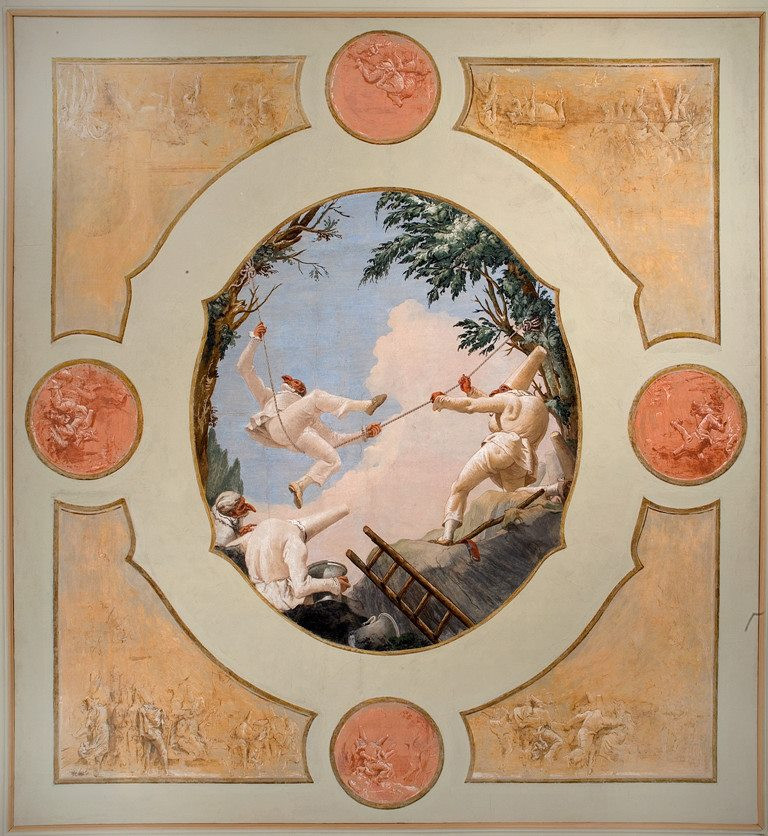
Ca Rezzonico | Sala di Pulcinella
A visit to Ca’ Rezzonico, the Museum of 18th-century Venice, is a leap back in time a few centuries.
It takes at least two hours, and in this post I will help you make a plan of what you must see at Va’ Rezzonico, which works you cannot miss before you leave, and I will also tell you some interesting trivia for you, who are an art lover.
What to see at Ca’ Rezzonico: must-see works
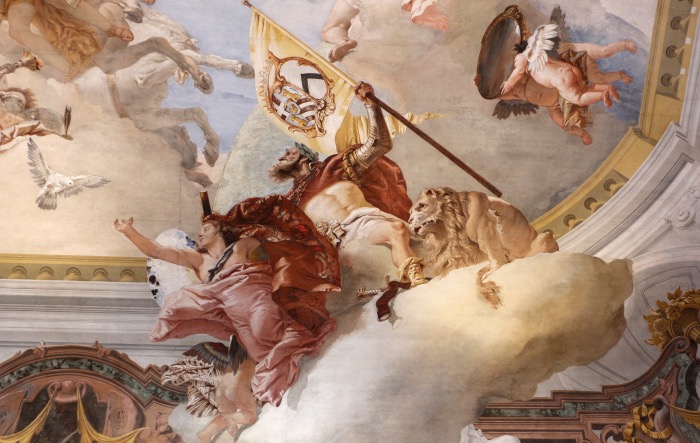
TIEPOL HALL
Giambattista Tiepolo left more than one masterpiece at Ca’ Rezzonico.
These are frescoes specially created for the palace, commissioned directly by the Rezzonico family and intended to celebrate the power and wealth of a family that even had a pope among its most illustrious members: Clement XIII.
The most interesting fresco is Tiepolo’s Nuptial Allegory and is housed in the hall of the same name at Ca’ Rezzonico, but there is a room entirely dedicated to Giambattista Tiepolo where the third of the artist’s four ceilings (Nobility and Virtue Overcoming Ignorance) is to be found, which comes from another Venetian palace belonging to the Rezzonico family.
It is not a fresco but a canvas, of which the preparatory sketch of the central part is known and which is in the Poldi Pezzoli Museum in Milan, one of the must-see museums in Milan.
THE PORTRAIT OF POPE CLEMENT XIII REZZONICO
The most illustrious member of the Rezzonico family and Pope Clement XIII was portrayed by the German Neoclassical painter Anton Raphael Mengs.
The painting was executed between July and December 1758, a few months after the election of Cardinal Carlo Rezzonico as pope. The work was originally intended for the family’s Venetian palace, but soon after its execution it was transferred to Rome, to the residence of the pope’s nephew, Cardinal Abbondio Rezzonico.
Only later did the painting return to Venice to become part of the collection of works in the Museo del Settecento Veneziano.
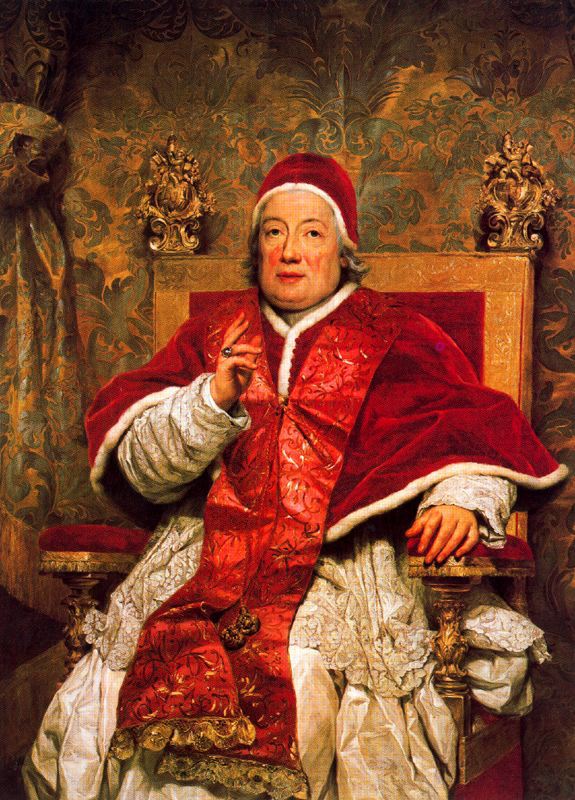
Anton Raphael Mengs, Papa Clemente XIII
HALL OF PASTELS
There are many paintings in the pastel room, but the most beautiful are certainly those by the Venetian painter Rosalba Carriera. In particular, the portrait of the contralto Faustina Bordoni Hasse testifies to the artist’s ability to thoroughly investigate the psychology of the characters she portrays.
Rosalba was a refined painter and specialised in portraits, as was customary for women who wanted to dedicate themselves to painting. She was not only skilled in depicting the faces, looks and psychology of the people she had to portray, but was also a skilled miniaturist, and in fact two of her small miniatures on ivory are preserved at Ca’ Rezzonico. They are among the most interesting examples of the miniaturist’s production of the painter, who was even appointed a member of the Accademia di San Luca Roma in 1705.
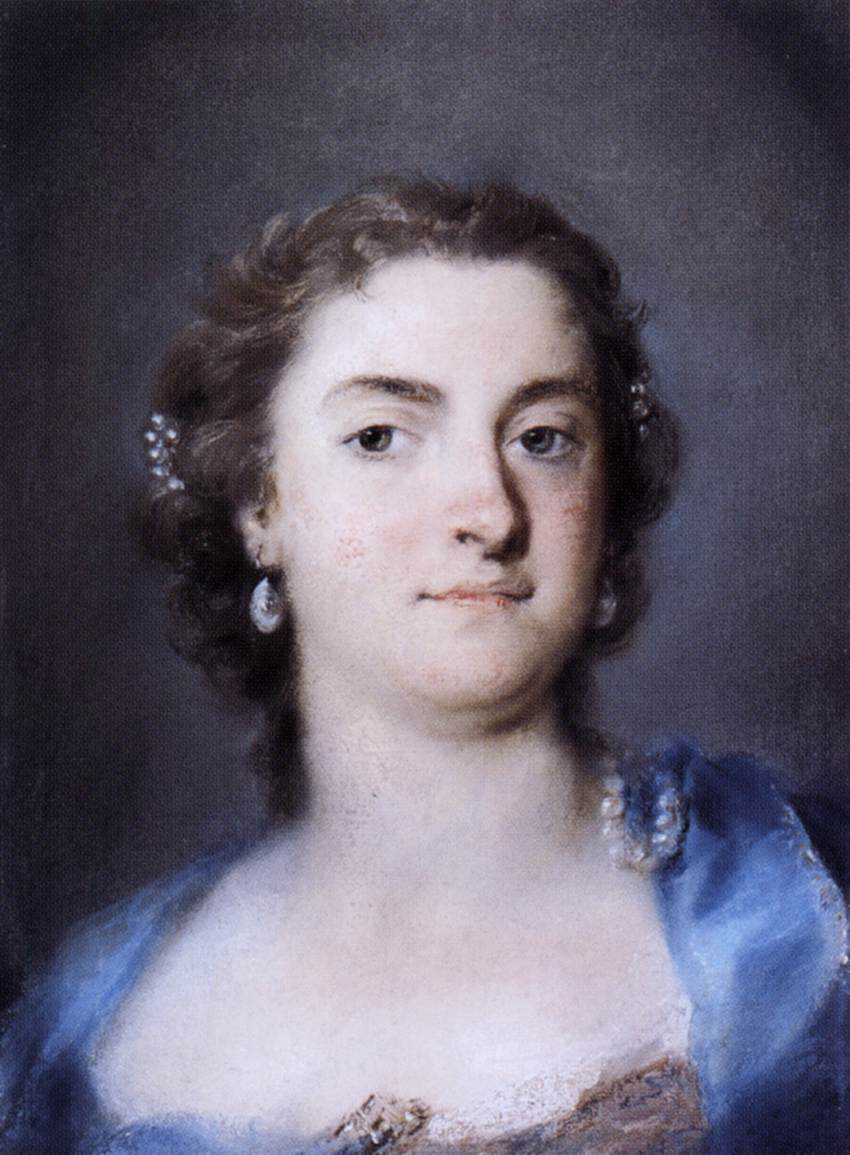
Rosalba Carriera, ritratto della contralto Faustina Bordoni Hasse
THE VIEWS OF CANALETTO
The works of the old masters could not be missing at Ca’ Rezzonico, and among them those of Canaletto. It is difficult to choose the most beautiful to admire, they are all stupendous.
If you feel like it, stop for a few more moments in front of the Grand Canal from Ca’ Balbi towards Rialto, which allows you to observe the Venice that could be seen from the windows of Ca’ Rezzonico but also to understand how Canaletto painted.
The skill as a set designer, which characterises Canaletto’s early work, is evident in this painting as in the others. Venice resembles a theatrical backdrop, the opening scene of a contemporary film, but also the magnificent setting within which the powerful Rezzonico family celebrated itself daily.
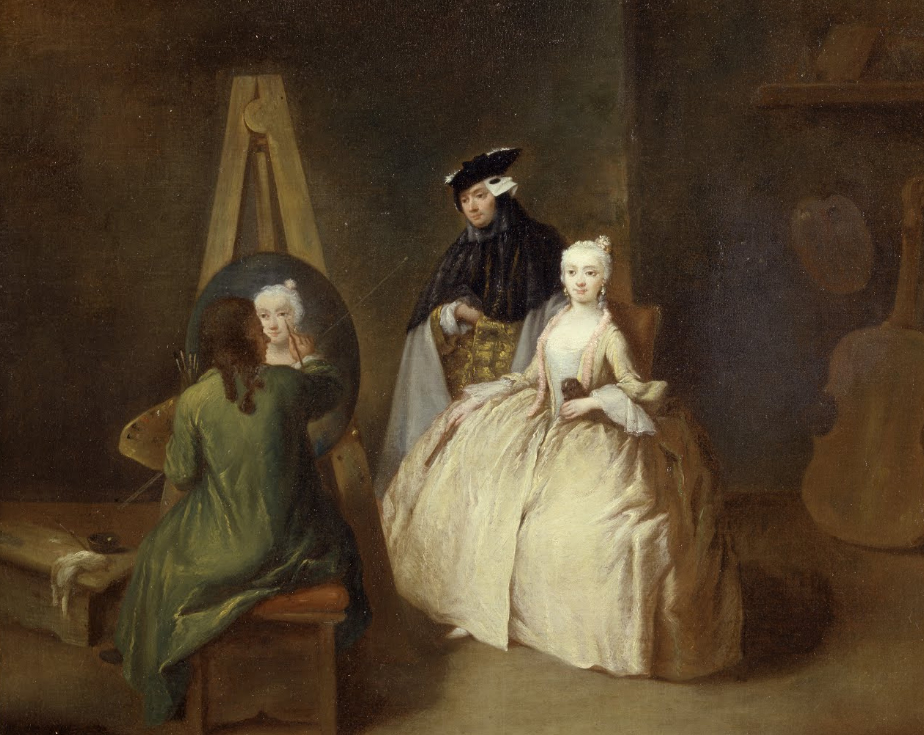
Pietro Longhi
LONGHI HALL
In this room are Pietro Longhi’s small canvases, which give us snapshots of everyday life in Venice in the 18th century.
They are all genre scenes: gallant encounters, the lives of humble peasants, the habits of rich nobles, domestic conversations and family groups.
These works observe Venetians and their homes, give us an insight into what life was like in Venice in the 18th century and also make us imagine what kind of days could be spent in the rooms of Ca’ Rezzonico.
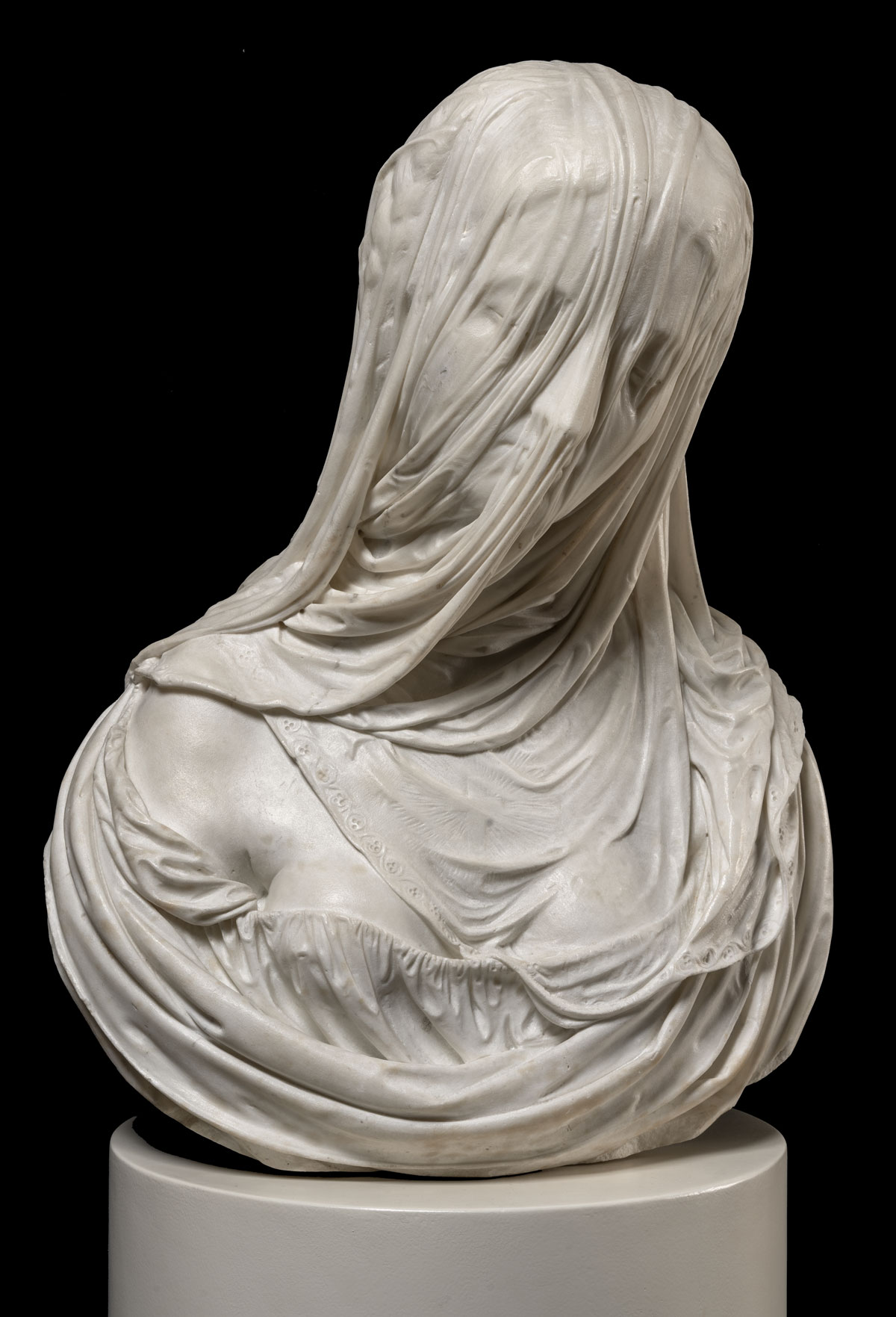
Antonio Corradini, testa velata
THE VEILED LADY OF ANTONIO CORRADINI
Antonio Corradini’s marvellous Veiled Head probably represents Purity.
It is a sculpture in which the artist’s talent for working the marble like a veil is evident, making the shapes of the face emerge and conveying a sensuality that should be foreign to a religious allegory.
It is impossible to take one’s eyes off this sculpture, which is perhaps the most beautiful in the Museo del Settecento Veneziano.
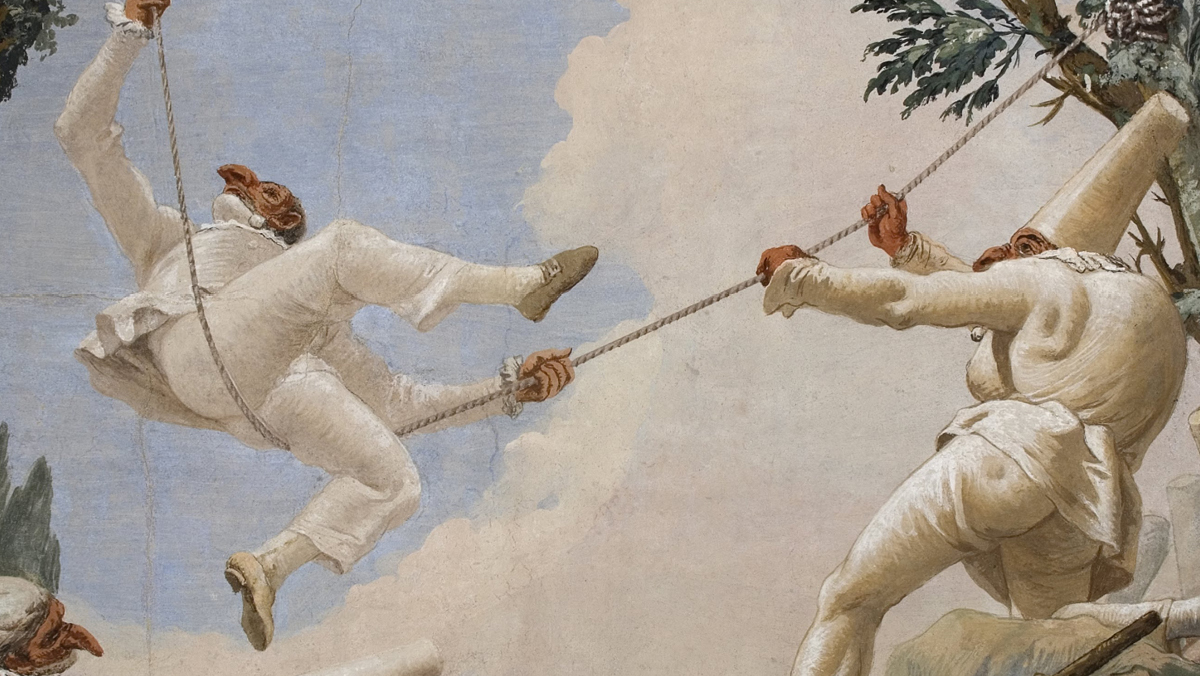
Giambattista Tiepolo, Pulcinella
FRESCOES OF VILLA ZIANIGO BY GIAMBATTISTA TIEPOLO
Ca’ Rezzonico preserves and exhibits the frescoes that Giambattista Tiepolo, son of Giandomenico, had painted for his residence in Zianigo, near Mirano, inland from Venice.
The frescoes were detached in 1906 to be sold in France but the sale was blocked by the Italian State and the works were first displayed at the Correr Museum and then placed at Ca’ Rezzonico.
It is the pictorial testament of an artist. Works created for himself and his house over a period of time from 1759 to 1797.
They narrate the vicissitudes of Pulcinella with scenes of villa life, games, wars and love affairs. They are the testimony of an artistic season that is coming to an end and will have to make way for something new.
They are the worthy conclusion of an itinerary that at Ca’ Rezzonico leads to the discovery of 18th-century Venetian art.

